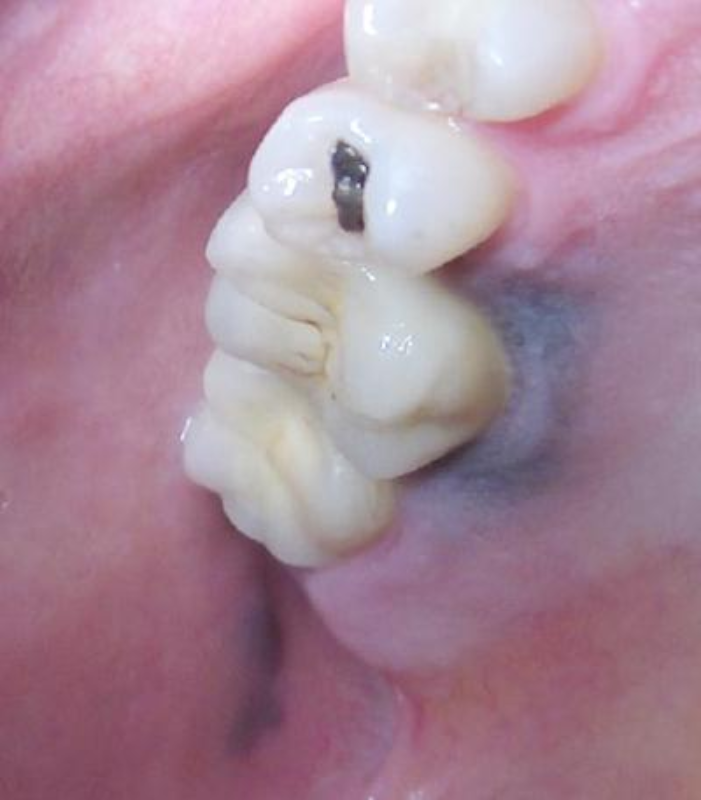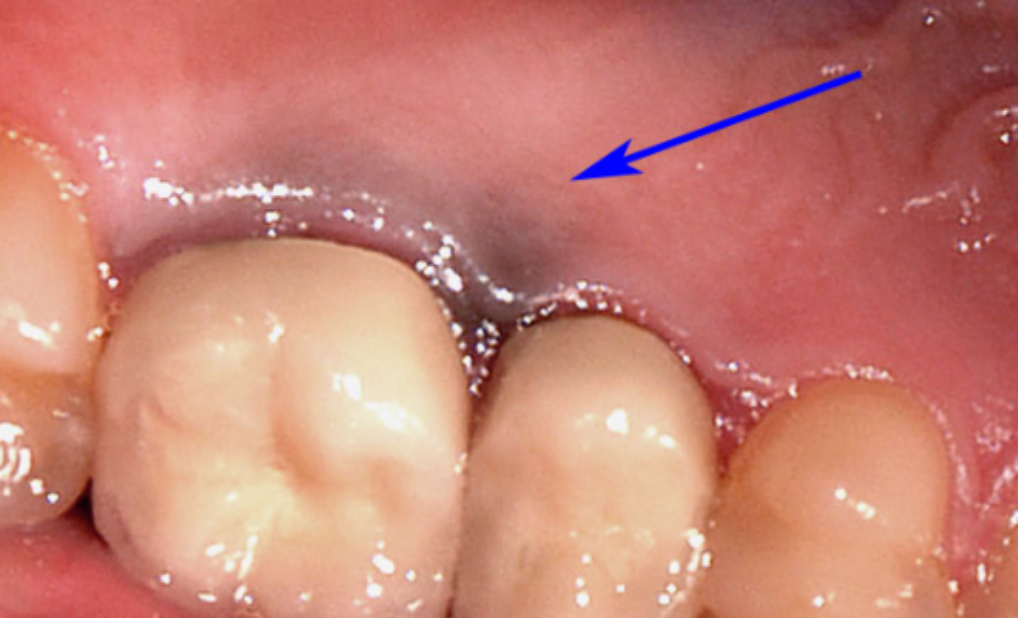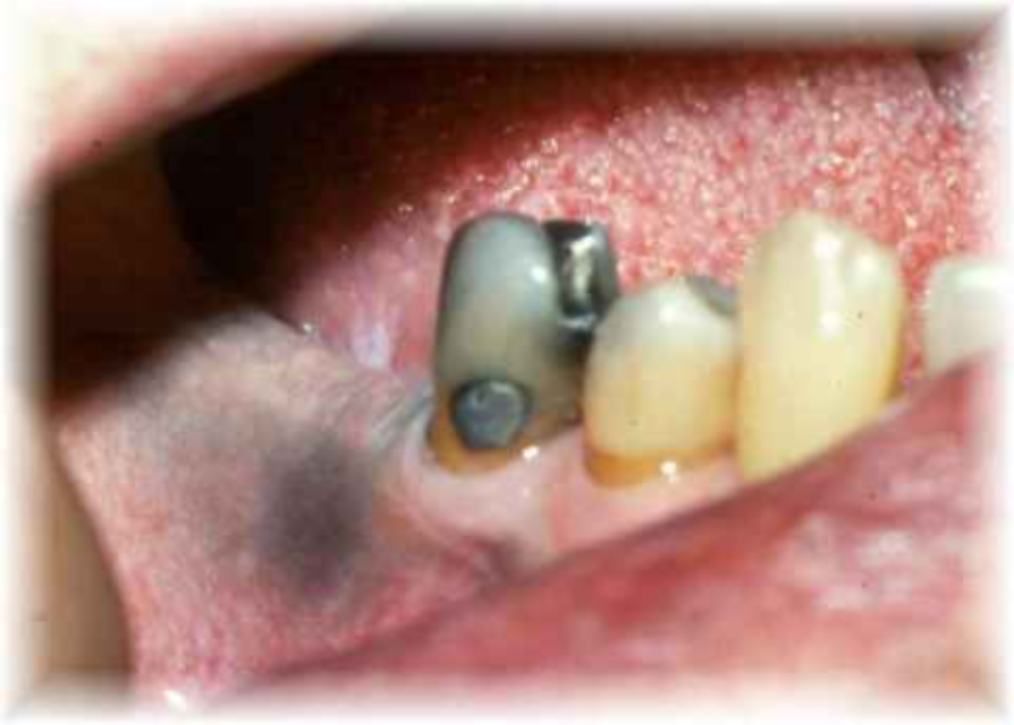Amalgam Tattoo (Focal Argyrosis)
What are Amalgam Tattoos?
An Amalgam Tattoo (also called a focal argyrosis) is the most common pigmentation of the oral cavity. It is an area of permanent bluish-gray pigmentation resulting from amalgam (silver) filling particles falling into small, open wounds created during dental treatment or by trauma shortly after a dental treatment, when small, fresh amalgam particles still cling to the mucosa.
What are the Signs & Symptoms of an Amalgam Tattoo?
The amalgam tattoo presents as a soft, painless, non-ulcerated, blue / gray / black macule (a small, flat, distinct, coloured area of skin that is ≤ 10 mm in diameter and does not include a change in skin texture or thickness) with no surrounding reddening.
They are more common in the lower jaw than the upper, typically in the bicuspid-molar region. The tattoo is found more frequently in women than in men, perhaps because women more frequently seek dental care. It is also seen more frequently with advancing patient age, presumably because of increased exposure to dental procedures over time.
There are no symptoms of an amalgam tattoo. In most cases, you won’t even know you have one.
How are they treated?
Reassurance. No treatment is necessary but a biopsy can be performed to rule out melanoma or another pigmented lesions.
Tattoos visible on the X-ray are usually not biopsied and those occurring on the visible part of the lips can be removed for cosmetic reasons.
There is no malignant potential for this lesion.
Do they come back?
An amalgam tattoo is permanent unless it is removed surgically. As amalgam tattoos do not cause harm, the prognosis is excellent.



